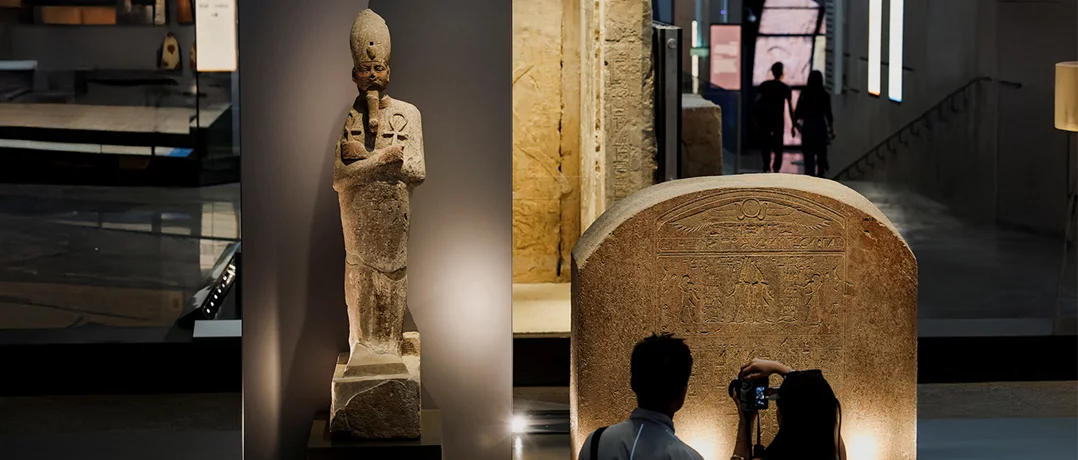Grand Egyptian Museum opening: Egypt unveils the Grand Egyptian Museum, a monumental cultural landmark showcasing 5,000 years of history and international collaboration.
Egypt announces the grand Egyptian museum a monument to civilization
Egypt announces the grand Egyptian museum a monument to civilization


Under the shadow of the Giza Pyramids, Egypt has opened the doors of its long-awaited Grand Egyptian Museum (GEM) a cultural landmark described as the world’s largest archaeological museum dedicated to a single civilization.
Presided over by President Abdel Fattah el-Sisi, the inauguration drew delegations from seventy-nine countries, among them thirty-nine kings, princes, and heads of state, in a ceremony that symbolically united ancient legacy with modern diplomacy.
The opening of the GEM crowns decades of meticulous planning, excavation, and international collaboration. In his address, Sisi paid tribute to the global partnerships that made the project possible, singling out Japan’s pivotal contribution in financing and technical support. “We must not forget the great support provided by the friendly nation of Japan for this monumental cultural project,” he said.
As a gesture of unity, each attending leader placed a miniature replica of the museum into a larger collective installation a powerful emblem of the shared effort that brought to life what many now hail as Egypt’s new monument to civilization.
A vision decade in the making
The idea of the Grand Egyptian Museum first took shape in the 1990s under then-Culture Minister Farouk Hosni, who envisioned a vast complex connecting the Pyramids, the Sphinx, and nearby temples in an integrated cultural corridor. The foundation stone was laid in February 2002, setting in motion an ambitious undertaking that would span more than two decades. The $1 billion project was funded primarily through two Japanese loans totalling $800 million, supplemented by Egyptian government resources, international donations, and partnerships. Designed to evoke rays of sunlight directed toward the pyramids, the museum’s architecture pays tribute to both Egypt’s geography and mythology, symbolizing the eternal dialogue between the desert and the Nile, the past and the present.
A monument to civilization
The Grand Egyptian Museum is more than a cultural landmark; it is the largest museum in the world devoted to a single civilization, housing over 100,000 artifacts that narrate 5,000 years of Egyptian history. At its entrance stands the colossal statue of Ramses II, relocated from Ramses Square to Giza in 2006. Inside, the Grand Staircase spanning 6,000 square meters guides visitors chronologically from the Old Kingdom to the Greco-Roman era.
Among the twelve permanent galleries, the centrepiece is the complete Tutankhamun collection more than 5,000 artifacts displayed together for the first time since the tomb’s discovery in 1922. Other highlights include the treasures of Queen Hetepheres (mother of King Khufu), the Khufu solar boat, and extensive exhibits dedicated to Egypt’s Greek and Roman heritage.
The complex also includes a children’s museum, research and restoration facilities, and spacious halls for temporary exhibitions, making it not only a showcase of antiquity but a hub of education and cultural innovation.
Restitution and renewal
In a gesture of growing international cooperation on cultural heritage, the Netherlands announced the return of a 3,500-year-old artifact believed to have been stolen and smuggled illegally from Egypt a move that highlights the renewed global effort to restore looted Egyptian treasures to their homeland.
A new global landmark
Authorities expect the Grand Egyptian Museum to welcome over five million visitors annually, reinforcing Egypt’s status as a world cultural and archaeological hub. From the laying of its foundation stone in 2002 to its grand opening more than twenty years later, the GEM stands as a living testament to Egypt’s resilience, ingenuity, and timeless heritage a bridge uniting ancient civilization and the modern world.


